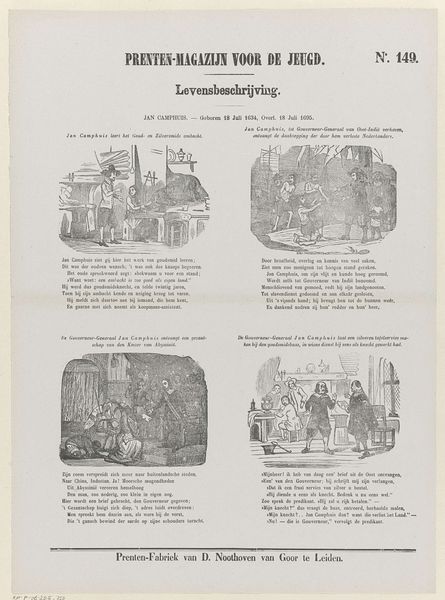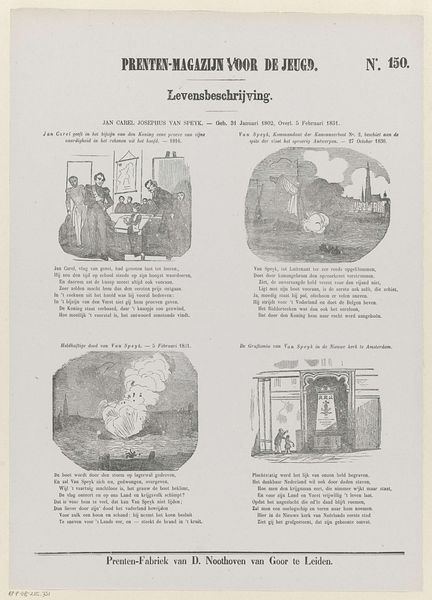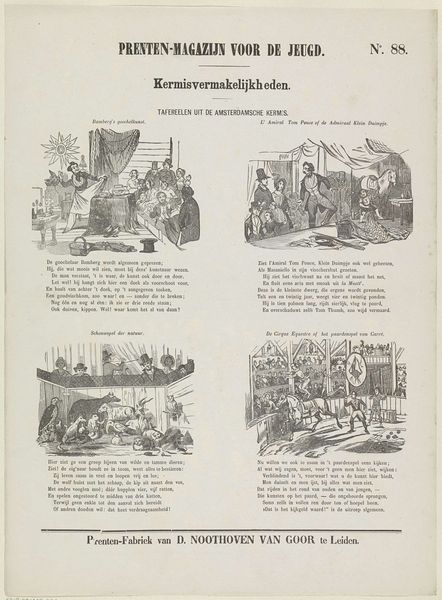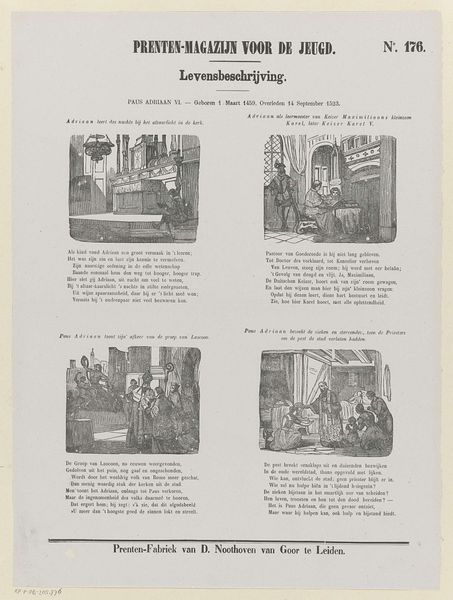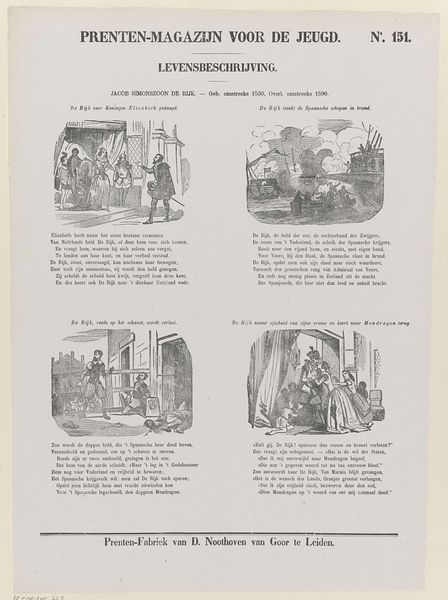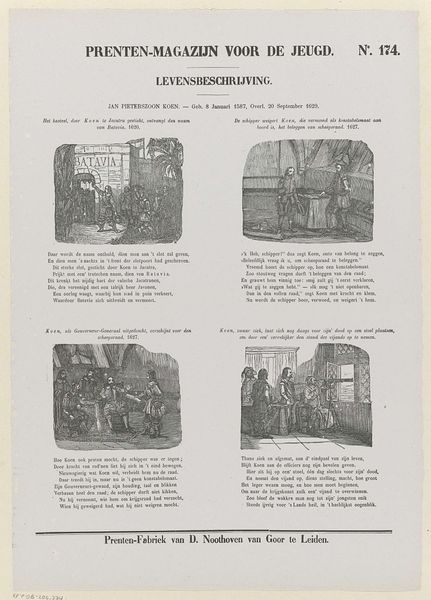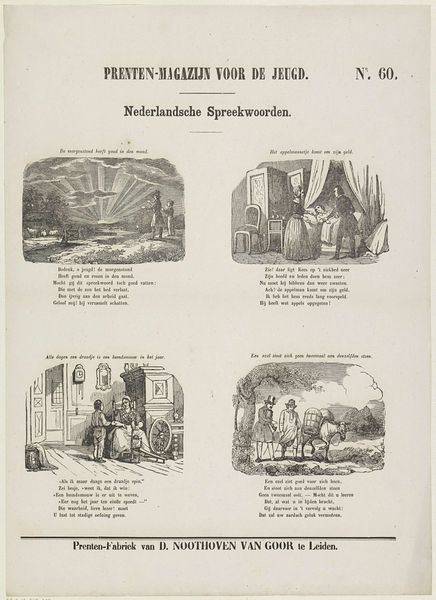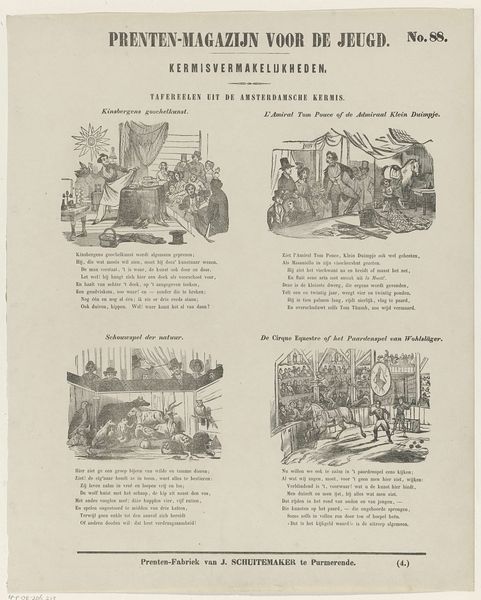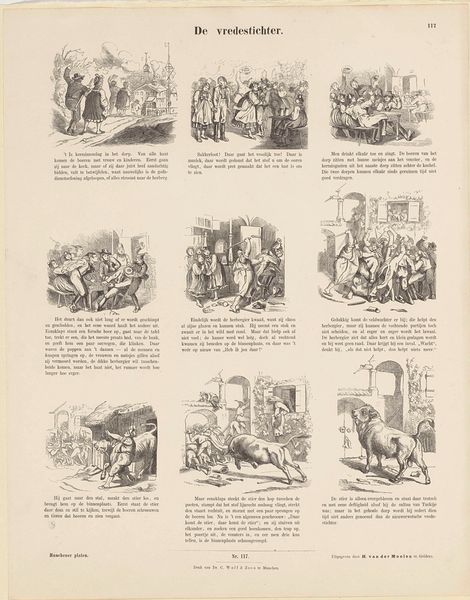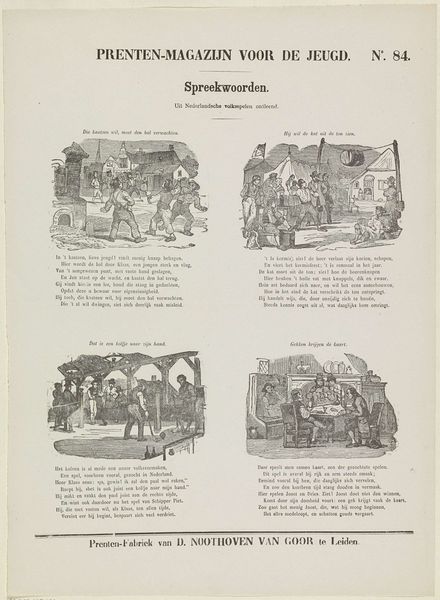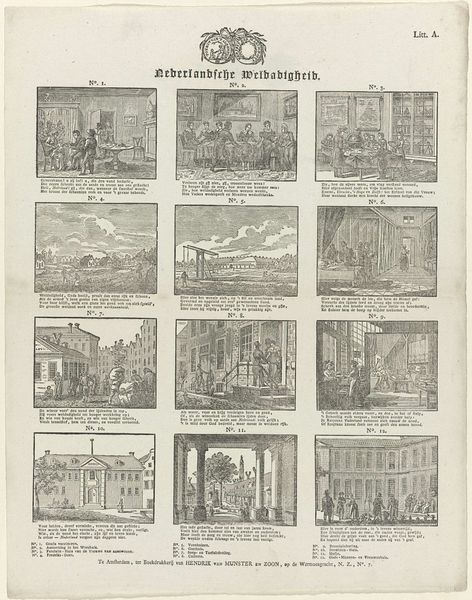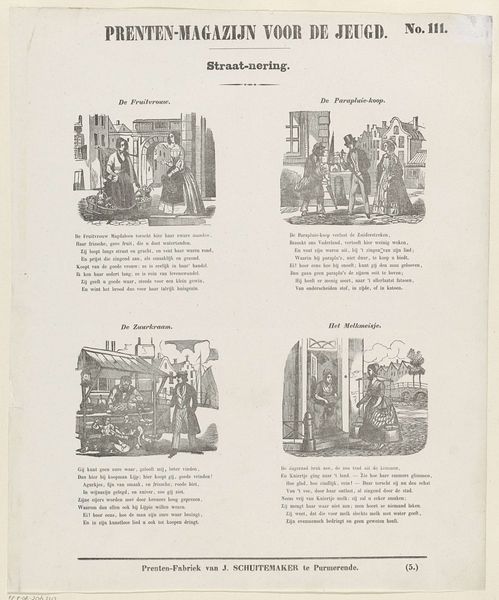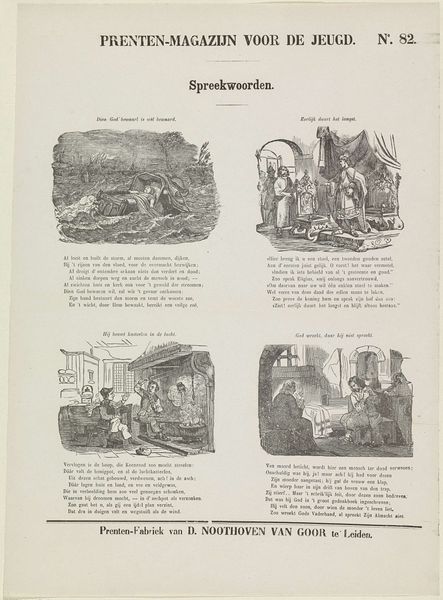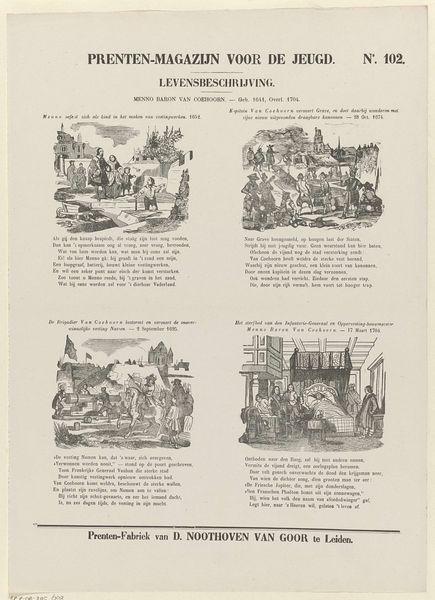
Hugo de Groot - Geboren 10 April 1583, Overleden 28 Augustus 1645 1850 - 1881
0:00
0:00
print, engraving
#
portrait
#
narrative-art
#
dutch-golden-age
# print
#
landscape
#
cityscape
#
history-painting
#
engraving
Dimensions: height 415 mm, width 299 mm
Copyright: Rijks Museum: Open Domain
Editor: This is a fascinating print, titled "Hugo de Groot - Geboren 10 April 1583, Overleden 28 Augustus 1645," created sometime between 1850 and 1881 by Dirk Noothoven van Goor. It depicts several scenes from Hugo de Groot’s life. The overall effect is…well, very narrative. What catches your eye when you look at this? Curator: The composition immediately suggests a form of visual storytelling, much like a medieval altarpiece or even a page from an illuminated manuscript. Notice how the scenes aren’t just randomly placed, but likely follow a chronological order? It's designed to be ‘read,’ embedding Hugo de Groot’s biography within the cultural memory. What do you think that choice of format signifies about the intention of this piece? Editor: That makes sense, framing his life as a series of important episodes. Was Hugo de Groot someone particularly revered? Curator: Absolutely. This engraving reveals how the Dutch Golden Age, even centuries later, utilized historical figures like De Groot to build and reinforce national identity and cultural values. Each scene is pregnant with symbolic weight - consider the image with the ship... does it evoke a specific narrative to you? Editor: The ship seems to represent escape and resilience, almost a romanticized idea of overcoming adversity. And the courtroom scene must point to his role as a lawyer. Curator: Precisely. These images acted as powerful tools, distilling complex historical and political narratives into easily digestible visual bites for the public. It subtly perpetuates a specific cultural memory, molding Hugo de Groot into a symbol that resonated through generations. I wonder about the relationship to text; are these vignettes illustrative of, or subservient to the accompanying writing? Editor: That's a great question. It definitely enriches my understanding of how art can function as a form of historical storytelling and cultural mythmaking. Curator: And it demonstrates the fascinating power images have in shaping and perpetuating a collective past.
Comments
No comments
Be the first to comment and join the conversation on the ultimate creative platform.
